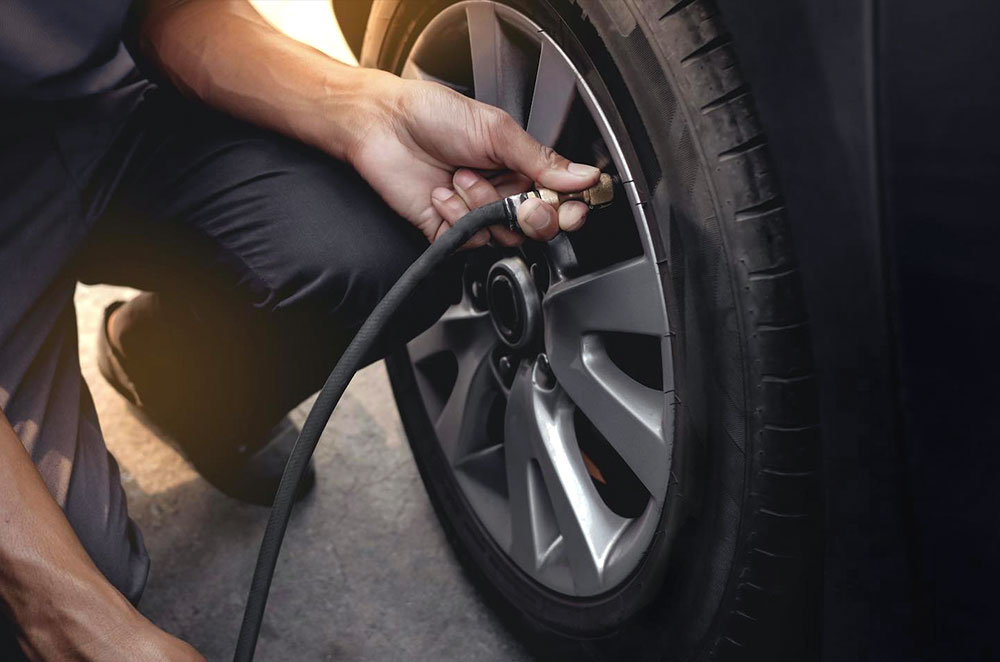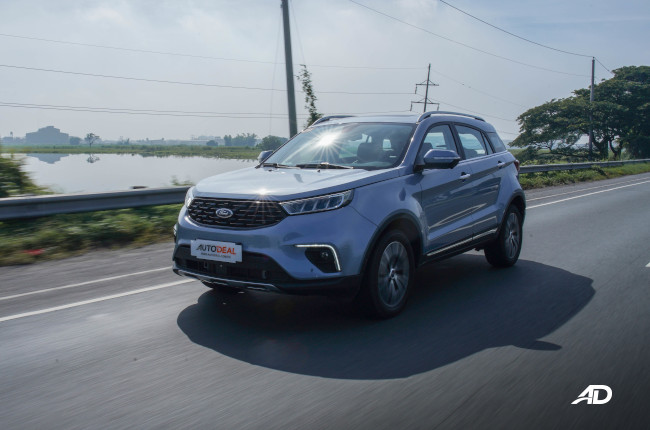
Taking good care of your tires is indeed a must. Achieving this does make your ride safer be it during short distance or long distance trips. On top of that, your car’s fuel economy figures are also affected by this, as underinflated tires have a higher rolling resistance which then reduces the fuel efficiency of your vehicle. Overinflated tires, on the other hand, could affect your car’s ride and comfort, not to mention, it’ll wear quicker and requires a replacement sooner. Underinflated tires are also prone to damage because you can bend and mangle the sidewall, which constitutes a replacement right away.
While modern cars nowadays come with different types of spare tires which should keep you covered during unexpected situations, it’s still best to maintain the proper tire pressure in order to avoid any of the following circumstances. With that, we shall give you some tips and tricks on how to properly inflate car tires.
Knowing your car’s required tire pressure

There are three ways to check your car’s required tire pressure, first is by browsing the owner’s manual, next is through the tire-pressure monitoring system which is found on most modern cars nowadays, and last is consulting the tire specification decal that could be located on the glove box cover, fuel filler flap, on the trunk lid, and commonly on the driver-side door frame.
Do take note that your car's tire pressure would usually depend on the tire’s full load-carrying capacity, so if say you’re going to carry more load or passengers than the usual, then you’re going to have to follow the required tire pressure according to your car’s inflation guidelines.
Check your current tire pressure

After knowing the required pressure, you must then check the current pressure of your tires. Other vehicles come standard with a tire pressure monitoring system which is a safety feature that allows you to check your tires’ pressure from time to time, plus, it will also alert you once any of your tires went below the prescribed pressure.

Unfortunately, most vehicles nowadays do not come with this feature, instead, the majority of car owners often use a tire pressure gauge. It’s a tool that attaches to the tire’s valve stem in order to identify its current pressure rate. It is also worth noting that some tire inflators, be it manual or automatic, come with a digital or analog gauge that shows your car’s current tire pressure.
Pump it up

After going through two of the most crucial processes, it’s finally time to fill your tires with the right amount of air. If you’re at home, then you could probably use a manual air pump or you could have an air compressor that should help you complete the task.

Now if you’re on the road and one of your tire’s pressure suddenly dropped, then you’re better off going to your nearest gas station where there is an automated air pump machine. You just have to enter your desired pressure, then attach the hose onto the tire’s valve stem, and let the machine do the work. Some cars can refer to their tire pressure monitor in order to assure that the tire now supports the prescribed PSI.
You’re ready to roll

Now that you’ve successfully inflated your car’s tires with the prescribed pressure, you can now safely proceed with your drive. Despite that, you should always stick to the routine of checking your tire pressures on a regular basis, perhaps, about once a week but no less than once a month and of course, before any long road trip in order to assure the comfort and safety of your passengers.
Latest Features
-
The 6 things every Ford Ranger must pass before it leaves the factory / Featured Article
Every Ford Ranger, from the base model to the Ranger Raptor, goes through a full inspection process before it leaves the factory. This includes six steps that make sure it’s ready to drive a...
-
Which GAC AION EV is best for your everyday lifestyle? / Featured Article
The GAC AION lineup has something for everyone, maybe you're after space, speed, or just a smooth city drive. Here's a quick breakdown of which model might work best for your day-to-day life...
-
The AutoDeal Awards 2024: Celebrating excellence in the auto Industry / Featured Article
The AutoDeal Awards 2024: Celebrating excellence in the auto Industry
Popular Articles
-
Cheapest cars under P700,000 in the Philippines
Jerome Tresvalles · Sep 02, 2024
-
First car or next car, the Ford EcoSport is a tough package to beat
Jun 18, 2021
-
Car Maintenance checklist and guide – here’s everything you need to know
Earl Lee · Jan 12, 2021
-
Most fuel efficient family cars in the Philippines
Bryan Aaron Rivera · Nov 27, 2020
-
2021 Geely Okavango — Everything you need to know
Joey Deriquito · Nov 19, 2020
-
Family cars in the Philippines with the biggest trunks
Sep 20, 2023
-
Head to head: Toyota Rush vs. Suzuki XL7
Joey Deriquito · Oct 28, 2020
-
Why oil changes are important for your car
Earl Lee · Nov 10, 2020
-
2021 Kia Stonic — What you need to know about it
Joey Deriquito · Oct 16, 2020
-
Top 7 tips for buying a used car in the Philippines
Joey Deriquito · Nov 26, 2020



